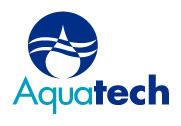According to Jack Leonard, Ph.D., there are many new technologies available for industrial wastewater treatment, and the things they can do are truly amazing. “However, they aren’t being used as much as they could,” said Leonard, president of the Environmental Management Institute (Indianapolis, Ind.), which offers a number of courses related to hazardous material and environmental management, including a two-day Industrial Wastewater Treatment course that covers tried and true methods (reverse osmosis, ion exchange, oxidation, etc.), as well as some of the newest technologies.
There are several reasons that industrial facilities have not taken advantage of many of the newest technologies. For one, according to Leonard, over the last 20 years, a lot of jobs that were once filled by professionals are now being filled by technicians. “One problem with this is that, because they are technicians, they often don’t have much of a say when a new process is being contemplated by the company as to what will be done with the water that comes out of it,” he said.
“Second, with so much manufacturing having moved out of the U.S., the companies that do remain are under a lot of competitive pressure to keep costs as low as possible,” said Leonard. As a result, many of these companies do not have the budgets to introduce new technologies or make other improvements to their existing wastewater treatment systems.
Third, regulatory requirements have also tended to be relatively stable over the last few years, so there are not a lot of new requirements that demand the introduction of new technologies. “There isn’t as much high quality research taking place in government labs as there once was that subsequently led to new regulations,” he said.
“As a result,” said Leonard, “the people who are managing industrial wastewater treatment systems are nursing old systems along, but wishing they could get the capital investments for new systems.”
A New Era
However, the low demand for new technologies may be coming to an end, according to Leonard, for at least three reasons. The first, of course, is that, eventually, existing systems will need to be replaced because they will no longer function properly. “Second, with more and more focus on water shortages, water reuse is becoming more popular, and industrial water is a part of this,” he explained. Another reason is that, with the growth of the electronics industry, there are a lot of new challenges for treating wastewater, because they contain things that have never been in industrial wastewater before. “There are a lot of new exotic metals that need to be treated,” he said. Even though there may not be any government regulations on these, companies need to address them simply from the general liability standpoint.
For companies considering new technologies or other improvements to their industrial wastewater treatment systems, Leonard offers three recommendations that will help to keep costs low.
First, regardless of which technologies companies use for wastewater treatment, one thing they should all focus attention on is the potential for automating and tracking these processes. “These days, we have so many metering devices, tracking devices and automated analytical procedures that can be applied to wastewater treatment,” he said. “This allows companies to do a better job of managing wastewater without requiring additional manpower.”
Second, treat the water as close to where it is generated as possible. “The second law of thermodynamics says that, the more things you mix in, the worse job you will do with treatment,” said Leonard. “A lot of companies want to build large, dedicated wastewater treatment plants and treat everything from the plant in one location. That makes everyone’s job more difficult, adds to the cost, and produces worse results.” Another benefit of treating as close to each tank as possible is that, in many cases, one can recover what one is specifically treating and reuse it, reducing costs even further.
Third, when appropriate, consider technologies that focus on individual contaminants. “One technology development is the ability to go in and pull out individual contaminants, particularly the inorganic contaminants, thus reducing the costs associated with treating everything in the water, much of which may not be problematic,” said Leonard.
A New Technology
One company offering industrial wastewater treatment technologies is Aquatech International Corp. (Canonsburg, Pa.). The company provides water purification systems and wastewater treatment technologies for industrial and infrastructure markets, including power, oil and gas, petrochemical, mining, food/beverage and municipal.
“From the external side, there is a lot more enhanced awareness by industry to deal with wastewater treatment, said Devesh Sharma, managing director for Aquatech. “Over the past couple of years, there has been a shift in interest from the ‘treat to discharge’ approach to the ‘recycle, reuse and zero liquid discharge’ approach.”
For example, according to Sharma, interest in oil removal technologies is shifting from flotation technologies to ceramic membranes. Biological technologies are focusing more on increased efficiencies and ways to reduce footprint by improving the amount of organics being removed, and then take the sludge that is generated and use it to create energy.
“All of these are aimed at improving reliability, reducing costs, reducing power consumption, being able to get the best quality water back and then dealing best with the resulting waste stream,” Sharma said.
One technology offered by Aquatech is an enhanced MBBR (moving bed bioreactor) media. It is a biological process utilizing an innovative media that is able to achieve water quality compliance in challenging applications, such as refinery and petrochemical effluents. The process offers cost benefits and can easily be used to retrofit existing non-compliant facilities. “It reduces the media volume by 40 to 80 percent, reduces media replacement frequency by more than 50 percent, and reduces the footprint required by 25 to 75 percent, which reduces costs, and reduces power consumption by up to 20 percent,” said Sharma.
The company is also tackling the recycle and zero discharge side of wastewater treatment. The company offers a hybrid zero liquid discharge (ZLD) process that combines the best of membrane treatment and thermal equipment. “We have applied this a lot throughout the power industry in the last several years and are continuing to improve on it,” said Sharma.
In addition, according to Sharma, one of the bigger issues in the U.S. is the treatment of FGD (flue gas desulfurization) wastewater from coal-fired power plants. Sharma noted that, while individual products are extremely important, they are very rarely a complete solution for wastewater. An integrated process solution makes more sense – one that involves some new and innovative technologies combined with some standard off-the-shelf technologies. “As a result, the ability to know what to integrate and how to integrate it is very important,” he said.
A New Energy
Another company with expertise in industrial wastewater treatment technology is Komline-Sanderson Engineering Corp. (Peapack, N.J.). The company develops, designs and manufactures equipment and systems for industrial process/production applications, industrial and municipal wastewater treatment plans, and flue gas treatment.
“One of the challenges these days relates to energy usage,” said Christopher Komline, vice president of Komline-Sanderson. “This is one thing we are working on with our customers.”
For example, according to Komline, anaerobic digesters are being used more and more. These digesters produce gas that can be used for a number of things, one of which is to burn in engines that drive generators. “This creates waste heat that can be used in our dryers to dry sludge,” he said. The sludge can then be burned to produce more electricity. As a result, the whole process helps to close the energy loop. (The company’s sludge dryer has a thermal efficiency of approximately 98 percent.)
And, according to Komline, dissolved air flotation technology, which was used quite a bit 20 to 25 years ago, but went out of favor, seems to be making a comeback, particularly in industrial wastewater clarification. Komline-Sanderson also sells rotary drum vacuum filters, belt filter presses, gravity belt thickeners, and plunger pumps.
A New Application
Siemens Water Technologies (Alpharetta, Ga.) also offers technology for industrial wastewater treatment. The company’s magnetite-ballasted CoMag System, previously available primarily to municipalities to increase water and wastewater treatment clarification performance in confined footprints, is now available for industrial water and wastewater treatment applications.
The CoMag System uses magnetite to ballast conventional chemical floc for improved settling rates and increased performance of wastewater and water treatment operations, while also reducing capital and lifecycle costs. The system removes contaminants by reducing total suspended solids, total phosphorus, turbidity, color, pathogens and metals below conventional treatment. It also employs a sludge recycle function to increase the system performance and clarity of the effluent. Up to 99 percent of the magnetite is recovered and returned to the system.
“The CoMag System offers distinct advantages for industrial plant operators who need to increase water and wastewater treatment capacity and performance,” said Kevin Warheit, global product manager for Siemens Water Technologies. “With a much smaller footprint, higher performance and lower capital costs, the CoMag System can be easily integrated into existing plant infrastructure and configured to meet a wide range of plant capacity requirements.”

